Best Replica Watches Info
The 60th Anniversary Of Daytona Will Be Released Soon; Let’s Look At 5 Daytonas Cheap Fake Watches.
At the upcoming Geneva Watches & Miracles Fair (March 27), Rolex is bound to release an essential new Daytona watch.
Think back ten years ago, on the 50th anniversary of Daytona in 2013, Rolex launched the platinum brown ceramic ring Daytona 116506. On the eve of the release of Daytona’s 60th anniversary new watch, let’s take a look today. The most critical Daytonas in the history of Rolex, as popular science, it is easy to understand the new watch to be released.
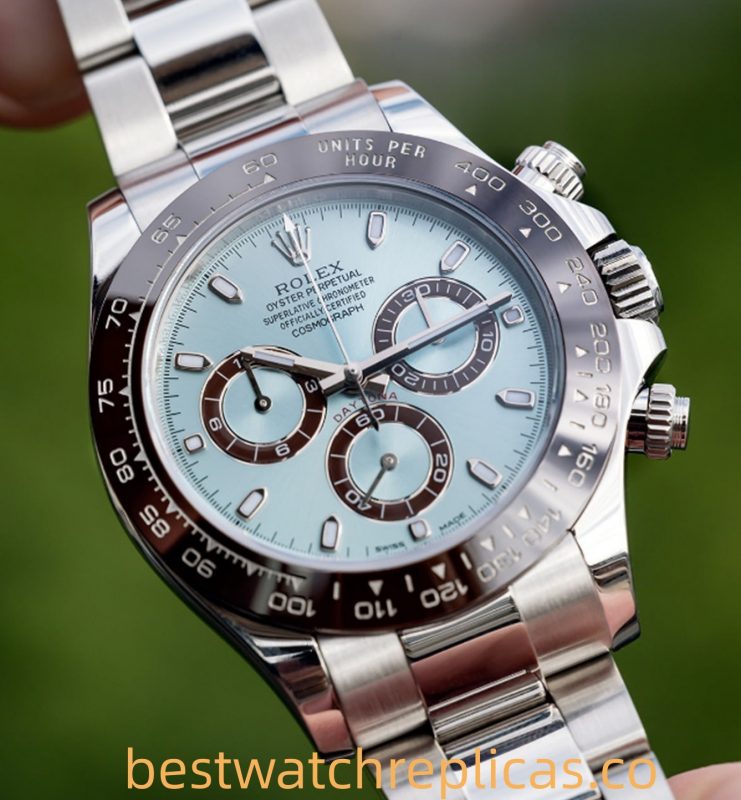
In 2013, on the 50th anniversary of Daytona, Rolex launched the Platinum Ice Landi 116506
Daytona 6239, the first Daytona in Rolex history.
Rolex launched Daytona for the first time in 1963, and 6239 is the first Daytona in Rolex history. It was produced from 1963 to 1969. Daytona’s English DAYTONA appeared on the cheap fake watches dial for the first time.
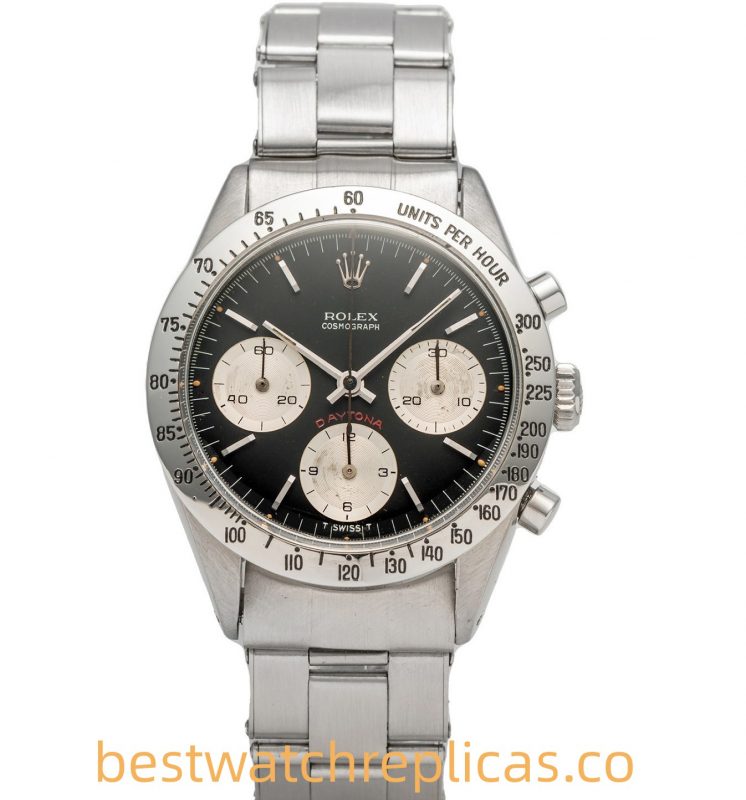
Daytona 6239, Daytona DAYTONA English, appeared on the dial for the first time.
Rolex Daytona 6239, with a size of 37 mm, the most prominent appearance feature is that the watch uses a stainless steel bezel, and there is no lock handle on the timing button, just an ordinary button. At the same time, only the words ROLEX COSMOGRAPH are written under the crown of the watch replicas dial. In addition to the standard style dial, Daytona 6239 has a “Paul Newman” dial. The small clock uses square scales. The hour markers and chronograph scales are located on the dial’s outer ring, which is usually a Daytona with black and white contrasting color dials (there are also gold dials, etc.). It was named after the actor Paul Newman wore it.
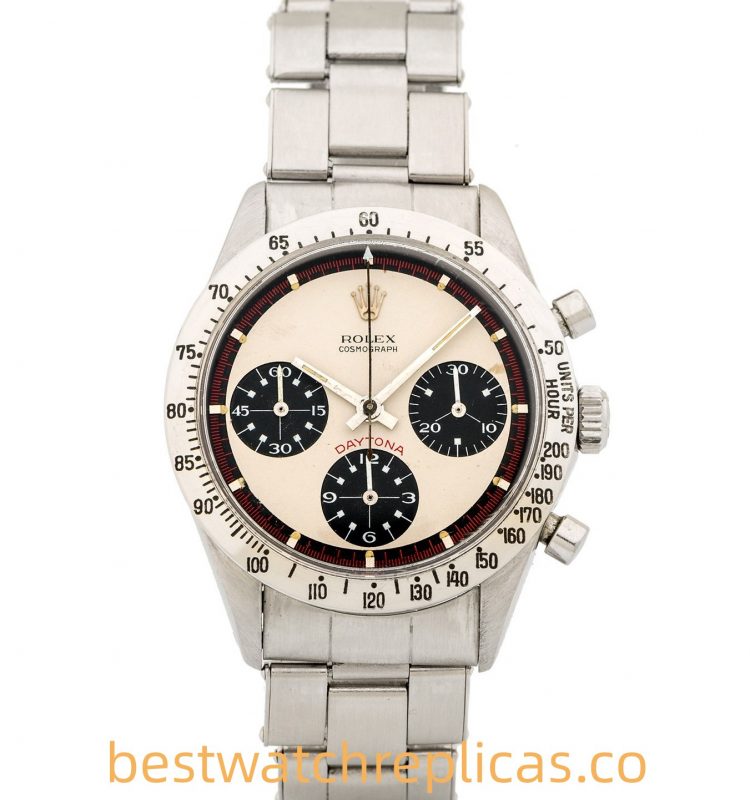
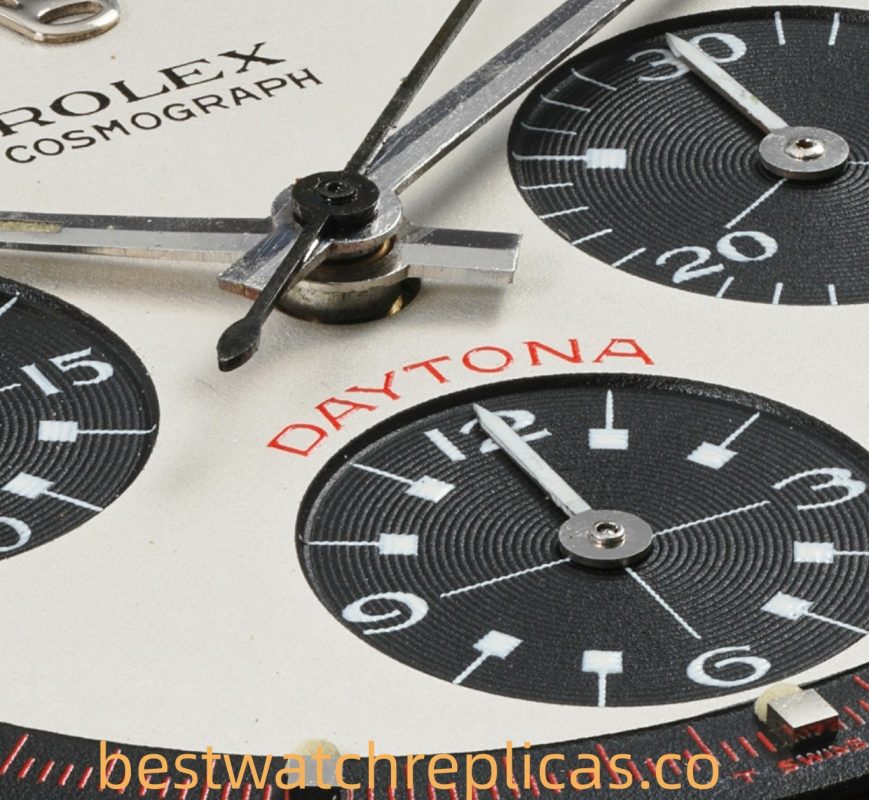
Daytona 6239 Paul Newman, and Paul Newman disk characteristics.
The Rolex Daytona 6239 is a manual clock that uses the Valjoux 72 series manual chronograph movement. Rolex purchased this chronograph movement from the Valjoux movement factory (ETA later acquired the Valjoux movement factory). It is a cylindrical wheel, horizontal clutch, and manual winding chronograph movement.
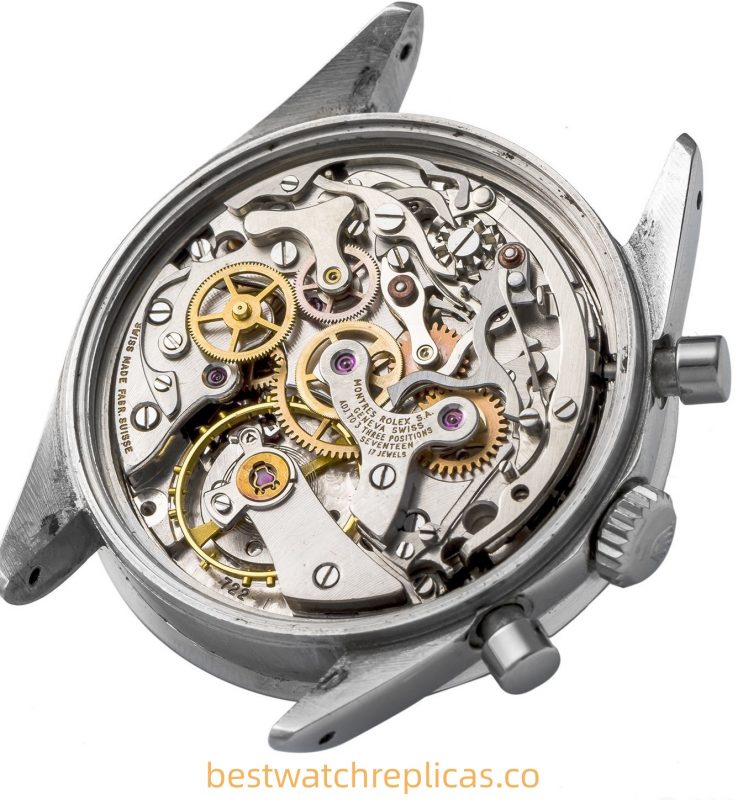
Daytona 6239, using the Valjoux 72 series manual chronograph movement.
Daytona 6263, Rolex’s first “Oyster” Daytona.
Daytona 6263 is the next-generation follow-up model of the previous 6239. The Rolex Daytona 6263 was produced from 1971 to 1987. The appearance of 6263 is generally the same as that of 6239, but the configuration has been upgraded.
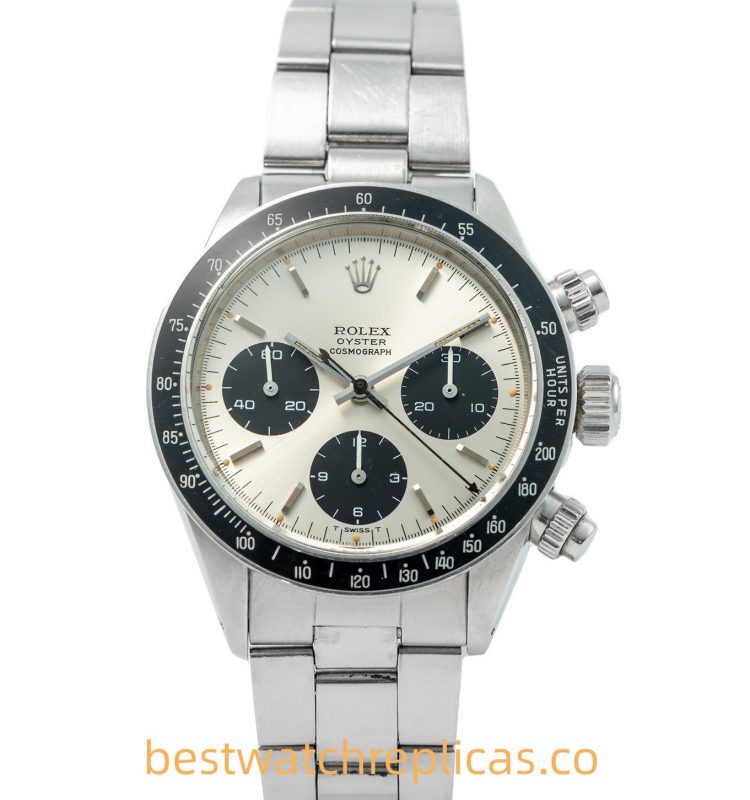
Daytona 6263, added crown screw-in lock, black acrylic bezel.
Rolex Daytona 6263, with a size of 37 mm, the most significant change in appearance is that the watch uses a black acrylic bezel, and the chronograph button has a screw-in lock handle. Since the chronograph button has a screw-in lock handle, it has a complete oyster case configuration, so a line of oyster OYSTER English is added under the crown of the dial. Similarly, in addition to the regular dial, the Rolex Daytona 6263 includes the “Paul Newman” dial style. Due to the timing button screwed into the lock, the value of the complete Oyster configuration, 6263, is often higher than that of 6239.
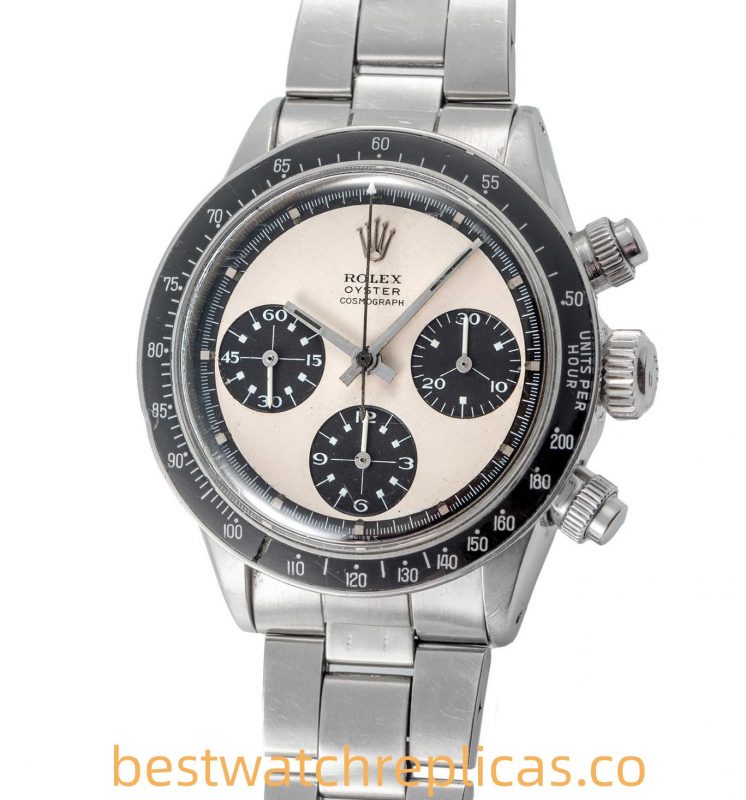
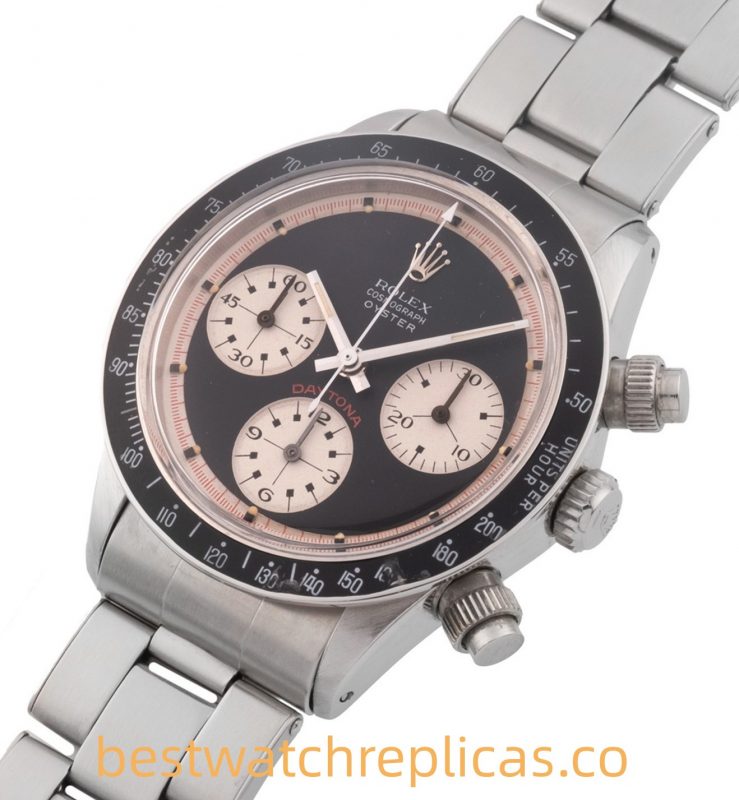
Daytona 6263 Paul Newman, pay attention to the timing button lock.
Rolex Daytona 6263 is still a manual clock, using the Valjoux 72 series manual chronograph movement. But specifically for Valjoux 727, Valjoux 727 increases the swing frequency from 18,000 times/hour of Valjoux 72 to 21,600 times/hour.
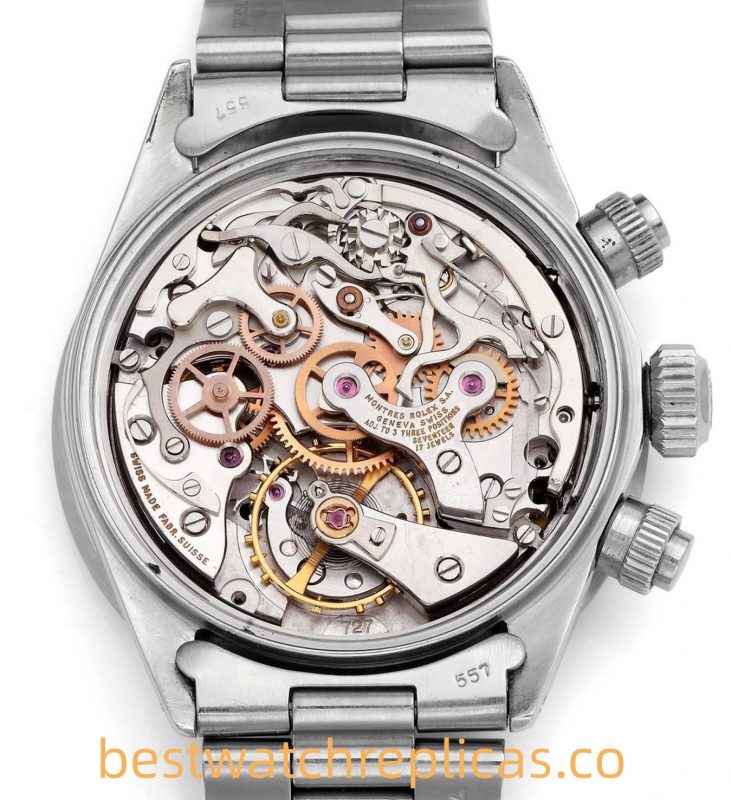
Daytona 6263, using the Valjoux 727 manual chronograph movement.
Daytona 16520, Rolex’s first “automatic” Daytona.
Rolex Daytona 16520 is the follow-up model of 6263. The watch has undergone tremendous changes from the inside to the outside. The previous Daytonas are all manually wound, and 16520 is Rolex’s first self-winding Daytona. 16520 was produced from 1988 to 1999.
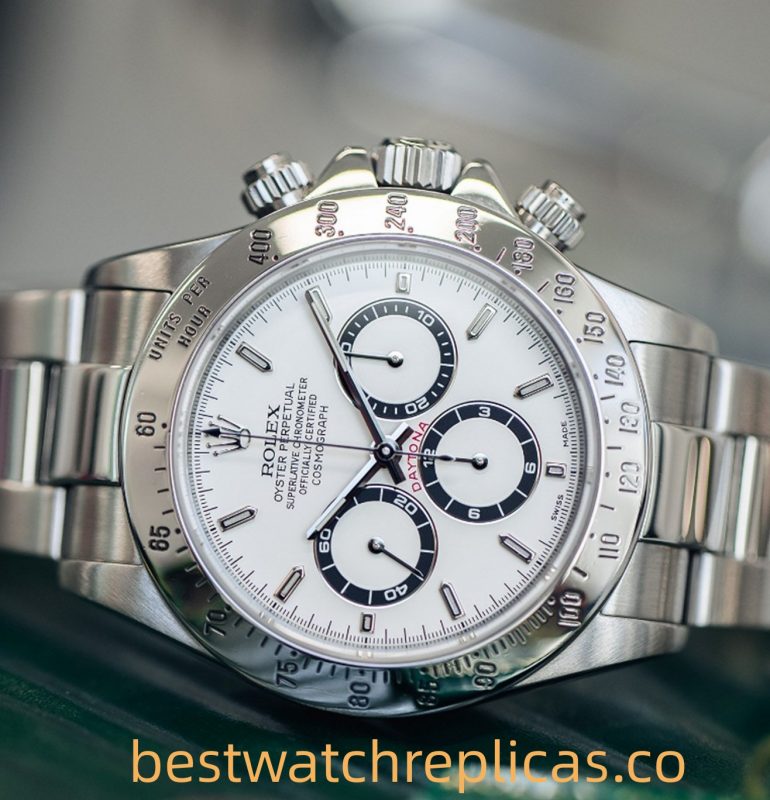
Daytona 16520 that is, Daytona with Zenith movement.
Rolex Daytona 16520, size 40mm. 16520 has established the style of today’s Daytona from size to appearance and has been used until today. Another significant change of Daytona 16520 is the movement. 16520 uses the EL PRIMERO automatic chronograph movement from Zenith. Rolex reduced the swing frequency of the EL PRIMERO movement from 36,000 times/hour to 28,800 times/hour and renumbered it as Rolex 4030 automatic chronograph movement. The reason why Rolex chose the Zenith movement was because of the impact of the quartz crisis in the 1970s; a large number of watch factories and movement factories closed down. At that time, among the high-end watch factories, only Zenith could quickly resume mass production and provide Rolex with high-quality self-winding chronograph movements, so Rolex selected EL PRIMERO.
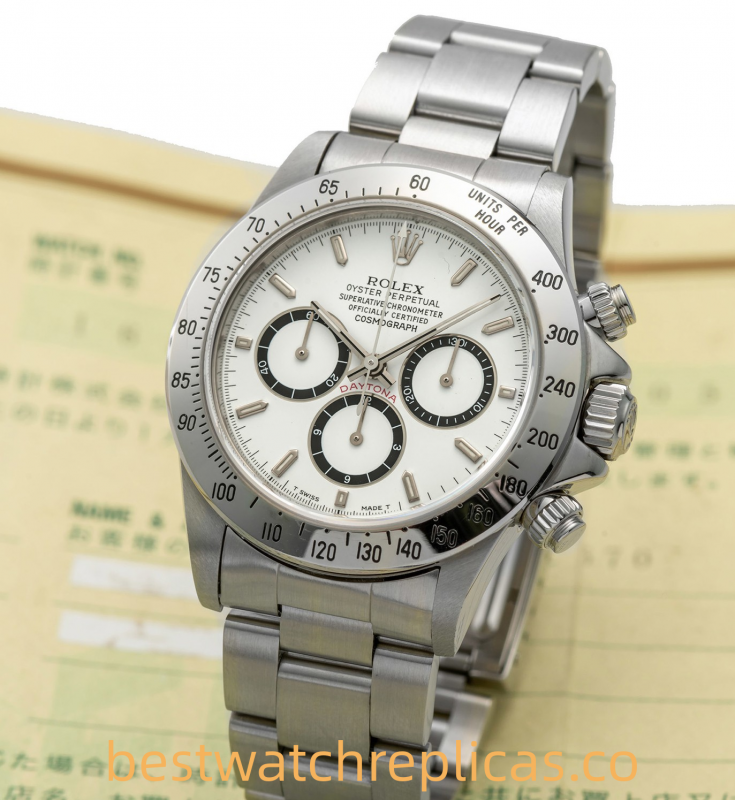
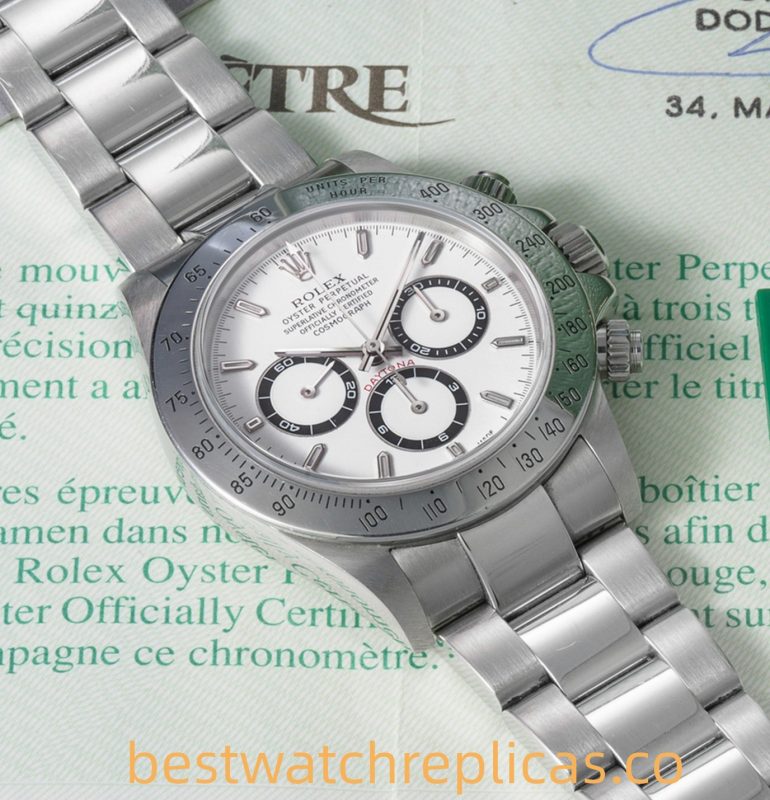
Daytona 16520, note that the small second hand is at 9 o’clock.
One of the distinguishing features of the appearance of Rolex Daytona 16520 is that due to the use of Zenith EL PRIMERO, the small second hand of 16520 is at 9 o’clock, which is different from the position of Daytona that uses Rolex’s self-produced movement (the self-produced movement is at 6 o’clock), you can recognize Daytona 16520 at a glance.
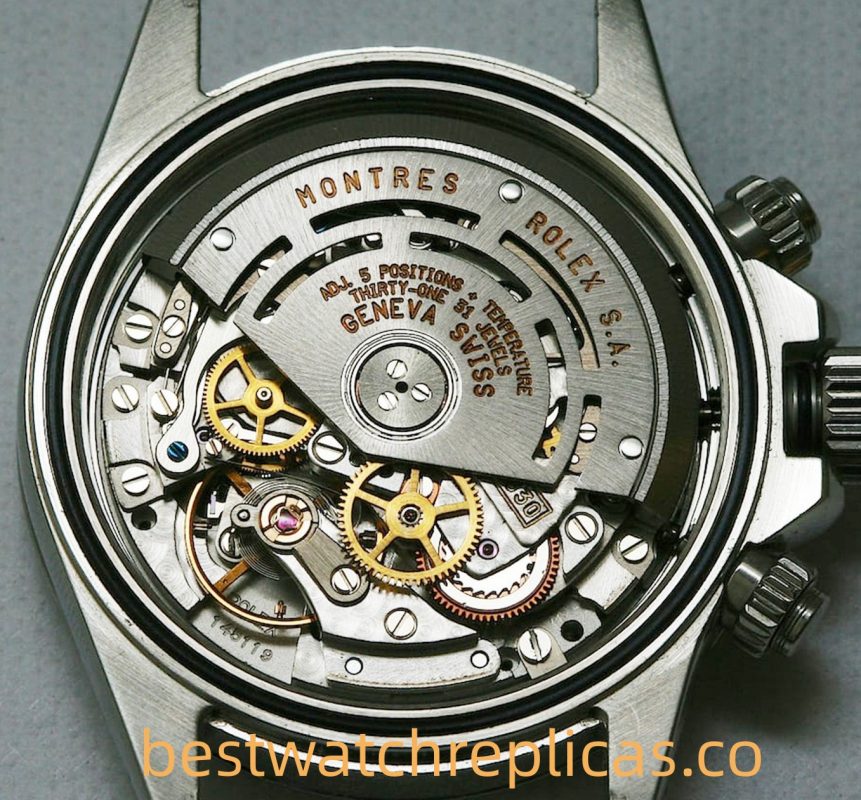
Daytona 16520 uses the 4030 movement, which is the Zenith EL PRIMERO movement.
Daytona 116520, Rolex’s first “self-produced movement” Daytona.
Rolex Daytona 116520 is the follow-up model of 16520. The most significant change of Daytona 116520 is that this watch is the first watch in the history of Rolex to use the “self-produced automatic chronograph movement.” The Daytona 116520 was produced from 2000 to 2015.
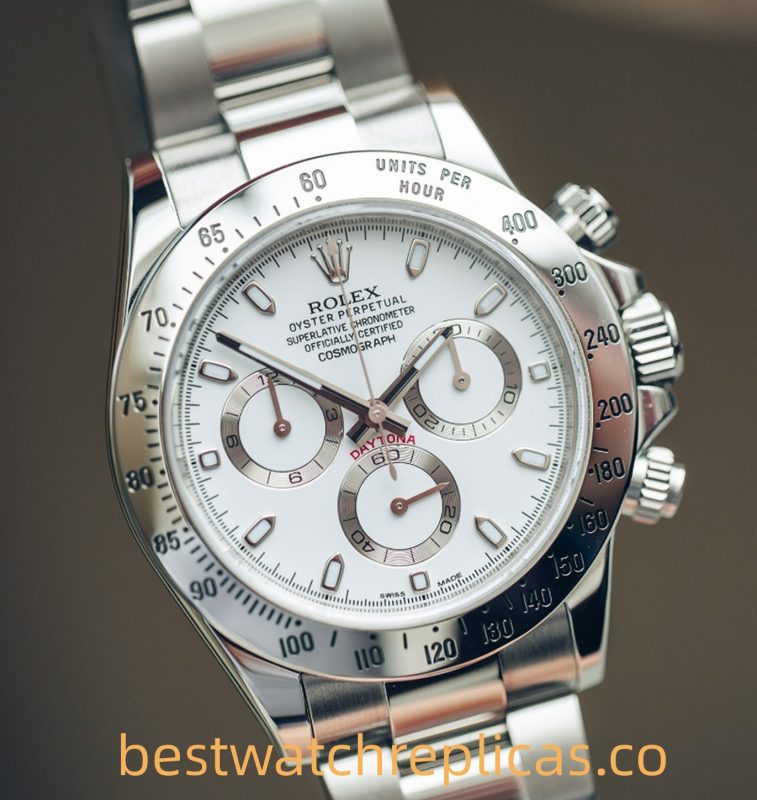
Daytona 116520 the first Daytona to use Rolex’s self-produced automatic chronograph movement.
You read that right; Rolex did not launch the first self-produced automatic chronograph movement, the 4130 movements, until 2000. As mentioned above, before the 4130 trends, the activities of Rolex Daytona were all outsourced. The 4130 automatic chronograph movement uses a cylindrical wheel, vertical clutch combination, 72-hour power, and outstanding overall quality. It is one of the benchmarks of contemporary involuntary chronograph movements. The 4130 automatic chronograph movement has been used since its launch in 2000 until today.
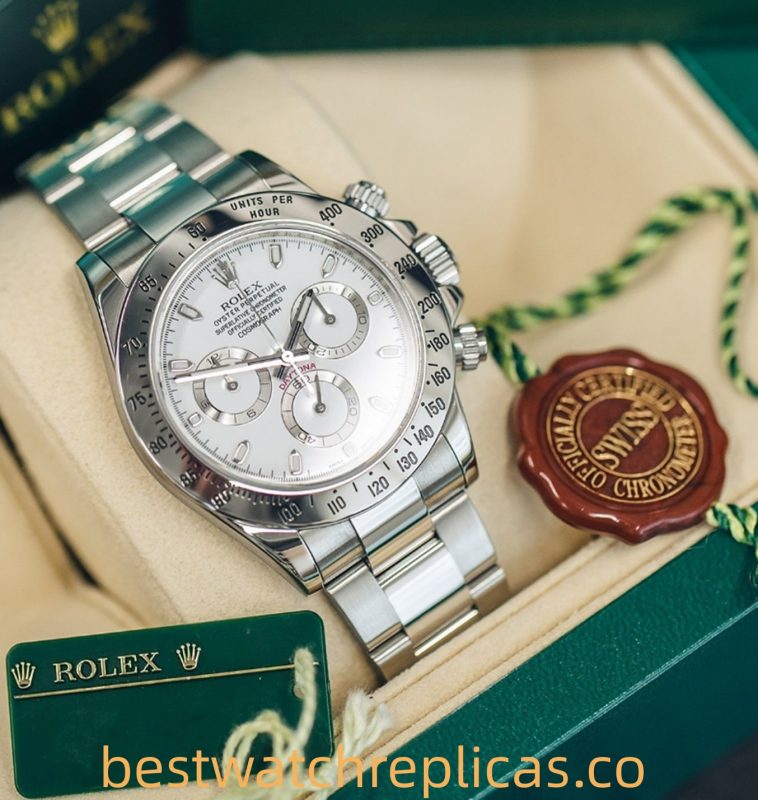
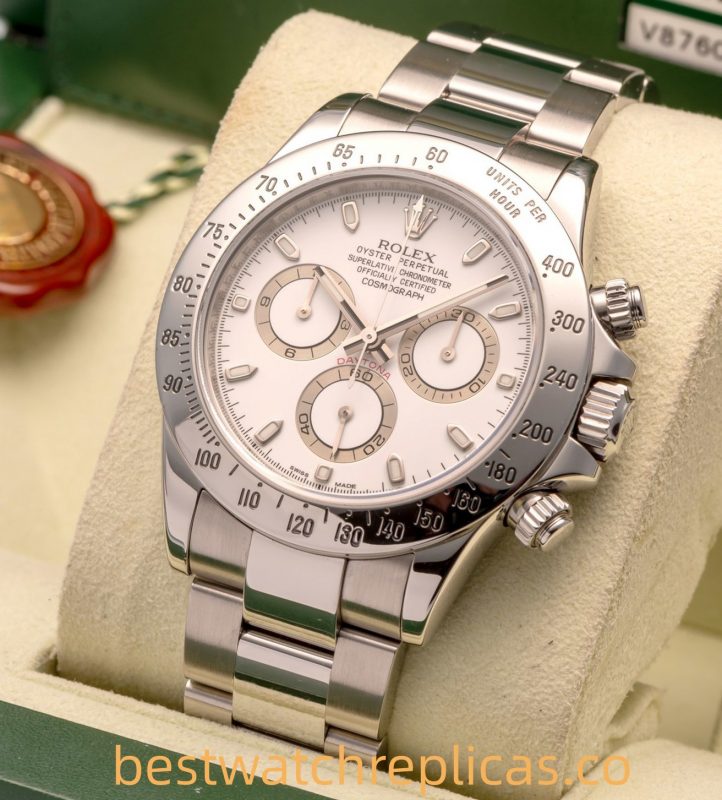
Daytona 116520, pay attention to the small second hand at 6 o’clock.
From the watch’s appearance, the Daytona 116520 has the same overall appearance as the previous generation, the 16520. It is still 40 mm, with a stainless steel bezel and fine-tuned details. However, due to the replacement of the 4130 movement, the layout of the watch panel has changed, and the position of the small second hand is at 6 o’clock on the board. This is the identifying feature of the 4130 movements Daytona.
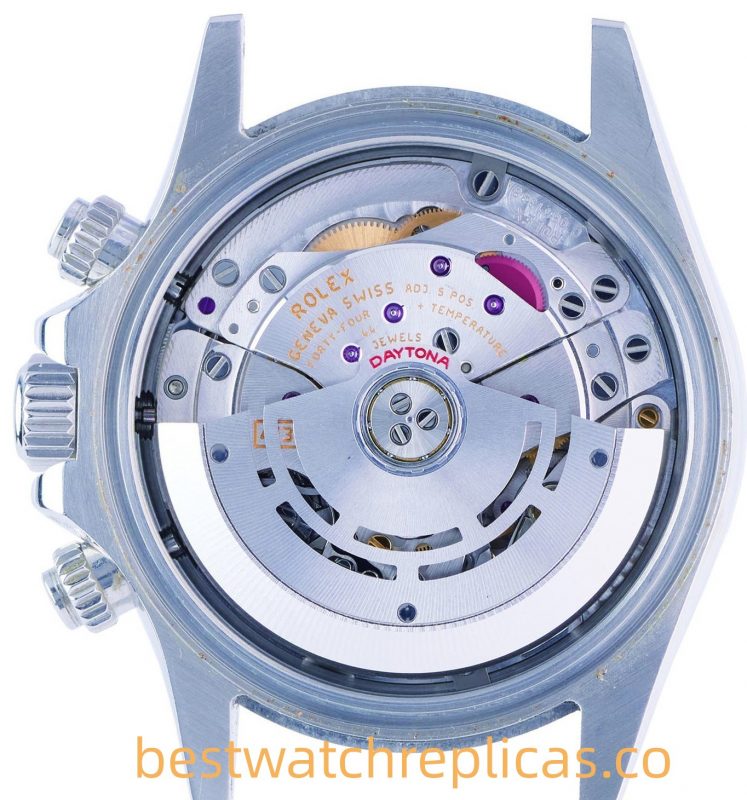
Rolex self-produced 4130 automatic chronograph movement.
Daytona 116500, Rolex “on sale” Gangdi.
Rolex Daytona 116500 is the follow-up model of 116520 and is also the model currently on the market. The most significant change of the Daytona 116500 is that it is equipped with a ceramic bezel. 116500 has been produced since 2016.
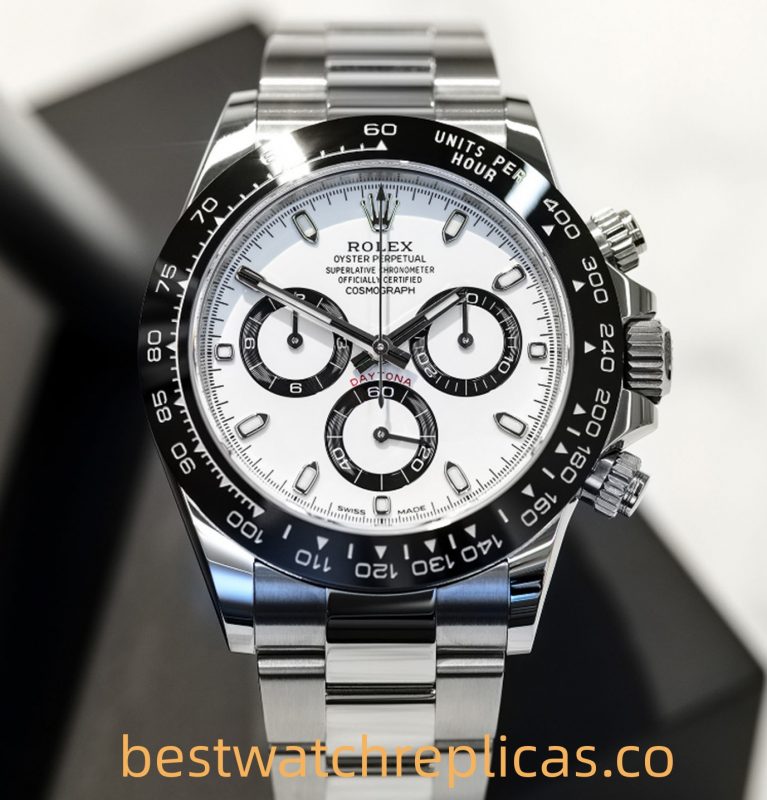
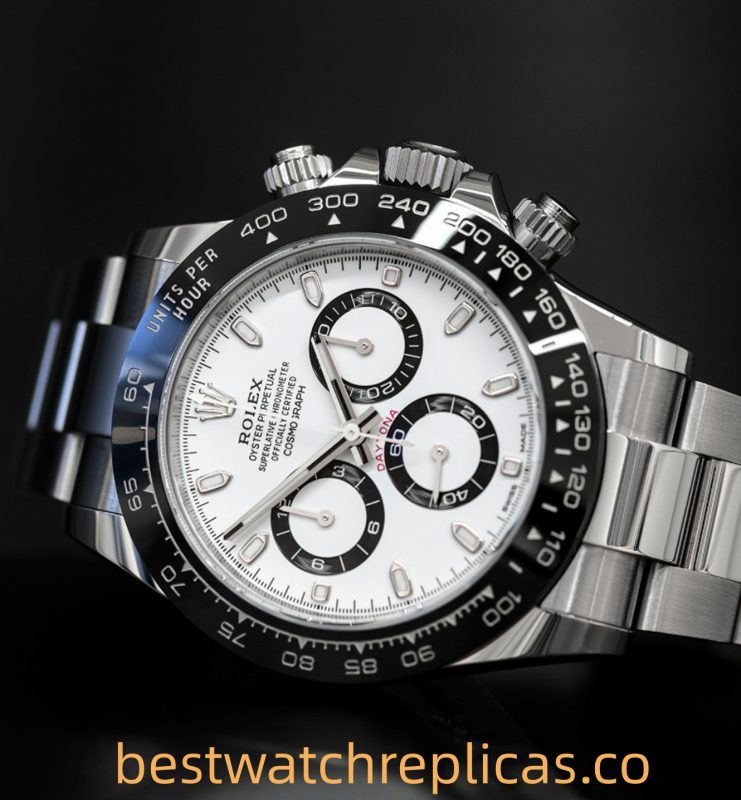
Daytona 116500, steel case, ceramic bezel.
Rolex is very cautious about the use of new materials. In 2011, 116515 with a gold rose case was a Daytona with a ceramic bezel. After that, in 2016, the ceramic ring was popularized on the steel shell Daytona, which is the 116500. The Daytona 116500 with a black ceramic bezel is reminiscent of the black acrylic bezel of the early Daytona 6263 (including 6241). Also, starting from the 116500 generations, Daytona’s market price began to rise rapidly. Among them, the “panda” color matching of the white and black chronograph dial is the most popular.
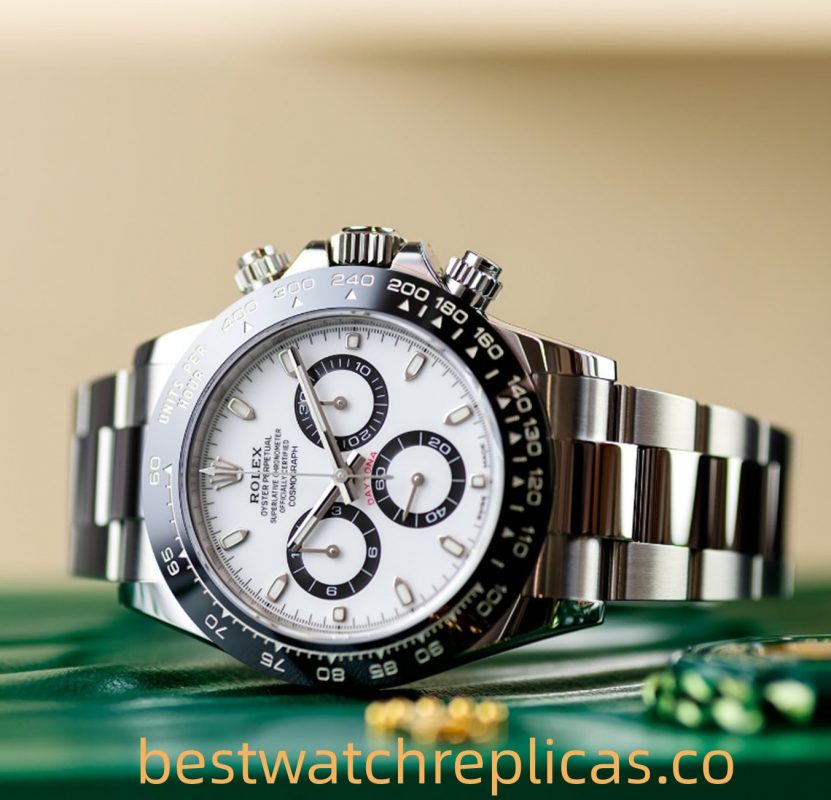
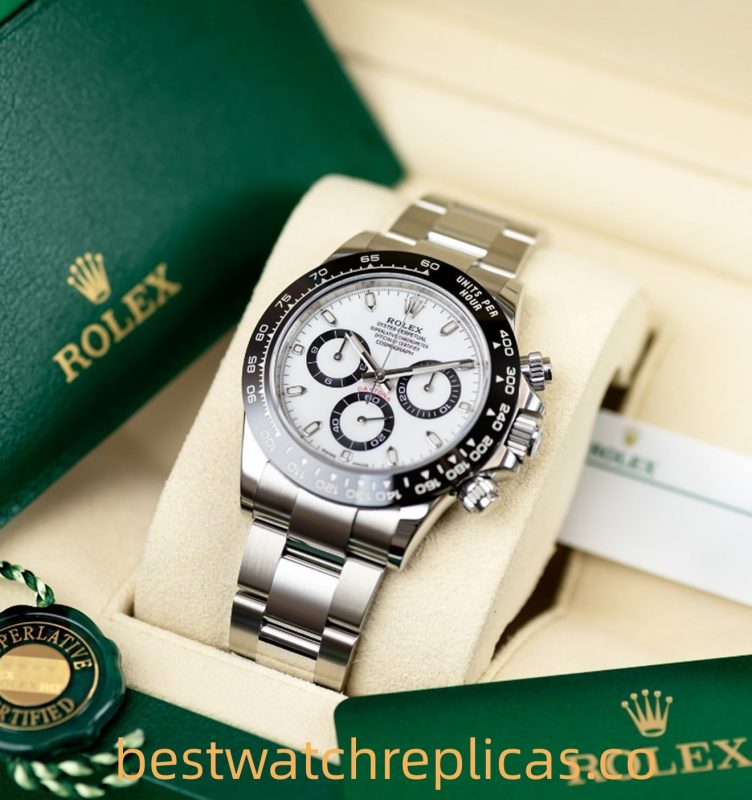
Daytona 116500
In addition to the ceramic ring, 116500 continues the 40mm size and uses the Rolex 4130 automatic chronograph movement. 116500 is the culmination of the current steel case Daytona. As for the new Daytona watch that Rolex will release at the upcoming Geneva Watch and Miracle Watch Fair, we will wait and see.
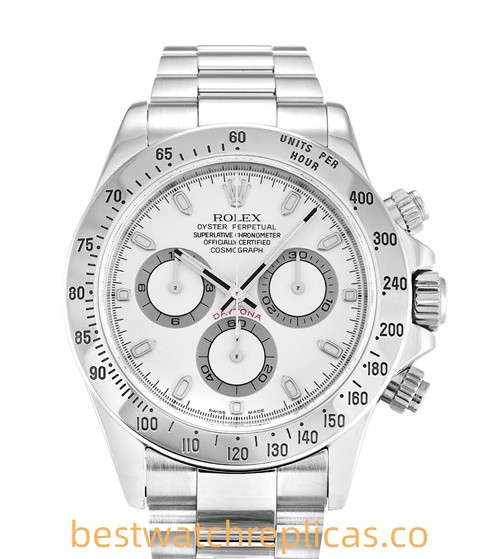
Brand: Rolex
Range: Daytona
Model: 116520
Gender: Mens
Movement: Automatic
Case_size: 40 MM
Case_material: Steel
Bracelet_material: Steel (OysterLock)
Dial_type: White Baton
Water_resistance: Water Resistant

